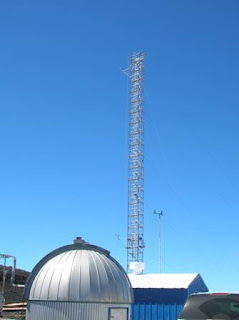The discussion about global warming and climate change has largely focused on the increasing amounts of carbon dioxide released in the atmosphere. But how do we know this? One of the major carbon dioxide monitoring stations is located in an unlikely place; near the top of a 14,000 foot volcano on Hawaii’s Big Island.
Mauna Loa Volcano, Hawaii
Mauna Loa Observatory is found on the Mauna Loa volcano at an elevation of about 11,000 feet. Why collect data about carbon dioxide levels on top of one of the largest volcanoes in the world? Mauna Loa’s remote location and high elevation ensures that carbon dioxide measurements are the most accurate possible since they are not greatly affected by major sources of air pollution in Asia, America, and Europe.
Carbon dioxide measurements were first taken by Charles Keeling in 1958. Since then, the amount of the gas in the atmosphere has steadily increased from 315 parts per million to 385 parts per million.
NOAA’s Mauna Loa Observatory
The tall tower takes carbon dioxide measurements at the observatory
Keeling’s graph of carbon dioxide levels, often called the Keeling Curve. The curve’s annual fluctuations are due to plants in the northern hemisphere absorbing carbon dioxide in the summer and then releasing it during the winter as deciduous trees lose their leaves.


